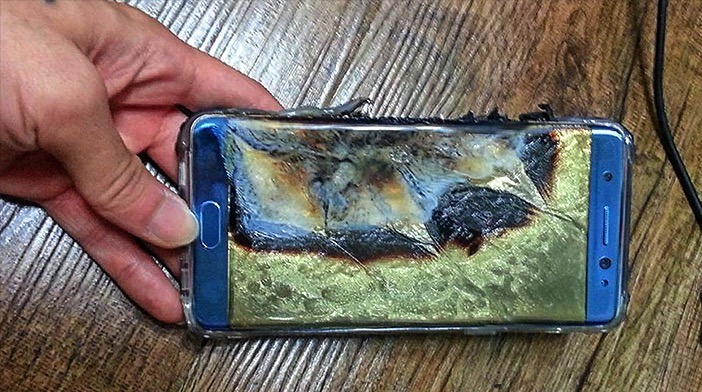The Galaxy Note 7 botched recall was apparently induced as a result of corporate secrecy plus a lack of communication between test engineers — and the company still can't reproduce the fires in the testing labs.
According to the New York Times, after it acknowledged a problem with the Galaxy Note 7, Samsung took all the internal steps it deemed necessary to discover the root cause of the problems. However, despite having a crew of "hundreds of employees" working on the problem, it may have misdiagnosed the initial problem, or have accidentally induced another in the post-refit device.
Two former Samsung employees told the New York Times that corporate culture is "militaristic," specifically that orders trickled down from the top, altered by upper and middle management along the way. Compounding the problem, decisions surrounding the recall and investigation were made by executives who didn't necessarily understand the underlying technologies involved.
"It didn't take many years for Nokia to tumble from its position as the world's top cellphone maker" — Chosun Ilbo, South Korea's largest newspaper
After a very brief examination, Samsung decided to recall the Galaxy Note 7 phones with the Samsung SDI batteries, because of demonstrated pinching near rounded corners and defects in insulating tape. For the replacements, Samsung shifted entirely to Amperex Technology batteries, which presumably didn't have the same shortcomings.
Samsung's evaluation proved to be wrong, and the solution inadequate. Nearly immediately, reports started circulating about fires in replacement units. On Monday, after a weekend of baffling communication with the public, the company completely stopped production of the Galaxy Note 7, and will no longer offer the phone for sale or exchange.
"It was too quick to blame the batteries; I think there was nothing wrong with them or that they were not the main problem," said former director of the Center for Advanced Batteries at the Korea Electronics Technology Institute Park Chul-wan. "The problem seems to be far more complex."
Complex problems need equally complicated solutions. In this case, the solution is a ceramic-lined mailing box sent to customers to return the defective phones, adding to the expense of the debacle.
Employees involved in the post-recall testing claimed that they were required to keep communications about the evaluation process offline, with e-mails and other accountable forms of communication forbidden. Samsung allegedly feared lawsuits and subpoenas as a result of the fires, leading to the drastic restrictions on staff.
It's not clear still what the root cause of the fires were in the first generation of the product, and what they are in the replacements. Most of the reported fires with the initial release were during charging, according to U.S. Consumer Product Safety Commission (CPSC).
The follow-up replacement unit fires don't seem to have that commonality, with most of the reported fires happening during normal use, or when powered off completely in the case of the evacuated flight because of an incident with the Galaxy Note 7 on the runway in Kentucky.
Samsung drew complaints from the CPSC in how it handled the initial "voluntary recall" of the device. Samsung reports that it is still working on the investigation as it has not yet found the problems causing the second round of fires, and is "fully cooperating" with the commission this time.
As a result of the Note 7 production stop, Samsung has cut its third quarter profit estimates by $2.3 billion. The damage may be more long-lasting than one quarter of less profit, however.
"You cannot really calculate the loss of consumer trust in money," said South Korea's largest newspaper Chosun Ilbo in an editorial. "It didn't take many years for Nokia to tumble from its position as the world's top cellphone maker."
 Mike Wuerthele
Mike Wuerthele

-m.jpg)






 William Gallagher
William Gallagher
 Andrew O'Hara
Andrew O'Hara
 Wesley Hilliard
Wesley Hilliard

 Malcolm Owen
Malcolm Owen
 Marko Zivkovic
Marko Zivkovic

 Chip Loder
Chip Loder




-m.jpg)




64 Comments
Lack of culture and values.
My girlfriend has a Note 5 at it gets quite hot when in the case. After the fires she charges it outside the case.
Im wondering if the compactness of the design that everyone loves about the current Samsung products aren't contributing to the fires; as in, they don't allow heat to dissipate properly.
There should be software and circuitry that shuts down a device long before sizzling...heat dissipation should be monitorable. This is a runaway malfunction...